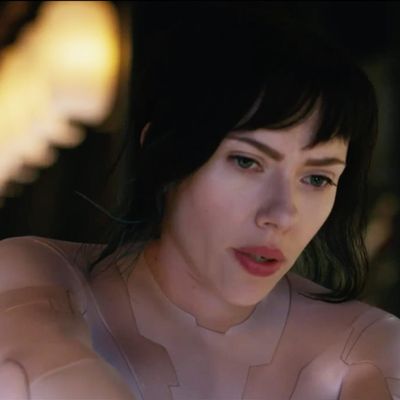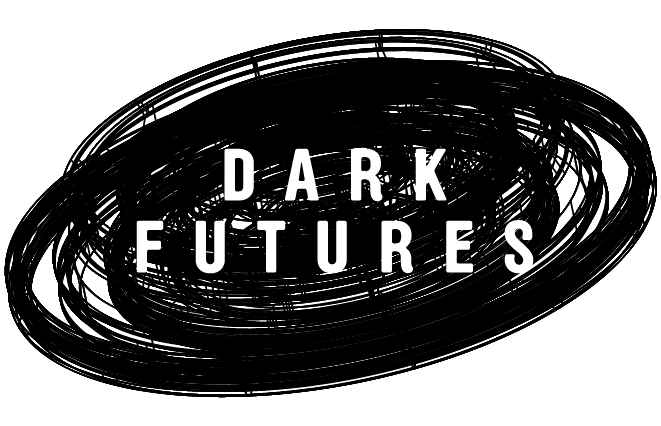
From TV to books to movies, dystopian tales are in the air right now. All week long, Vulture is exploring how they’ve been imagined in popular culture.
The filmmakers of Ghost in the Shell faced a monumental challenge: How do you render in live action the kind of visionary spectacle that characterized the anime and manga source material? As the film hits Blu-ray, Vulture sat down with visual-effects supervisor Guillaume Rocheron to discuss five elements that helped introduce Ghost in the Shell’s world during one of the opening scenes, in which Major, played by Scarlett Johansson, infiltrates a hostage situation.
The City
“Really, the idea of creating the world of Ghost in the Shell was the main focus and challenge [of the film]. It was really about creating a world that the audience would believe in, if you want them to believe the story. We’re trying to portray a world where everybody has some level of cyber enhancement and there’s an overflow of information. Humans and computers and technology are kind of merging together, and the world had to show that very clearly for the audience.
“Probably one of the first things that [director] Rupert Sanders and I discussed was, ‘How do we create that world? How do we show that to the audience? How do we very quickly immerse the audience in that world?’ This is how we came about to design the shots on what we called the ‘ghost cam,’ that are basically those silly, long, continuous shots through the city. We called them ghost cams because they’re literally like a point of view floating through the city, and they’re not really showing a given location, but it takes you on a journey through the city canyons and through various places in the city.
“Designing the city was definitely an interesting component, because we had to design new architecture, which we did with production designer Jan Roelfs and the guys at MPC, which was the visual-effects company on the movie, and the guys at Weta Workshop. When we were shooting in New Zealand, we made some miniatures of those buildings. We viewed the miniatures more as rapid-prototype tools more than the traditional sense of miniatures that you can build and film. What we did is, we scanned them: We did a 3-D scan of those miniatures and we created them in the computer.”
The Advertising
“To create the world with all the advertising, we had to design — I don’t remember exactly how many, but we probably created upwards of 60 ads that we would just put through the movie. It’s always interesting when you work in advertising; it takes quite a bit of work to create one ad. Then for the movie, you have to create 60 of them, with fictional brands. What was really interesting about designing these ads was that we were not designing them in 2-D form; we were embracing the fact that everything was volumetric. There’s no screen — nothing is projected on a screen. Everything is like a solid hologram. We called them ‘solograms,’ because the whole concept was these giants forms or people that you can project like a hologram in a city.
“All of that advertising, we had to design it in a way where it could all be lit specifically for the shot we put them in. Some of the advertising ended up in ten different shots, so we designed them in this neutral way so they’re full CG, volumetric objects that you decide to put in the cityscape, and in the computer we would light the sologram so they would go along perfectly with the scene.
“I felt we would never really be able to light the subjects perfectly in FX, not knowing exactly where they would be and not knowing exactly how the cityscape would be. What we ended up doing was working with Dayton Taylor, who used to design bullet-time rigs with DSLRs. We got in touch to get his expertise on synchronizing cameras, to create some new camera system that would allow us to film a subject from many different points of view at the same, and use it to create what we call ‘photogrammetry,’ which allows you to reconstruct any given object in 3-D. It can be a building, it can be a person — it can be anything. What matters is filming the subject from so many different points of view that the computer understands its curvatures and volume, and is able to reconstruct it. That’s something we’ve been doing in the past to create scans of actors, so we can create digital versions of them. Where we pushed the system was when we asked, ‘How do we do that with moving people? How do we do that with moving performances, so we can film volumetric advertising?’ Dayton, working with us in preproduction, designed the system with like, 80 cameras. We had a dome of 80 cameras that surrounded the actors and were perfectly in sync, filming the subjects all at the same time, from 80 different points of view. Later on, MPC took all that footage and ran a 3-D scan per frame. Movies are 24 frames per second, so we needed to get 24 scans per second to get a moving subject. It’s a bit like moving animatronics, but filming humans and capturing it in real time.”
The Suit
“The original intent was to make a practical suit for Major. The team at Weta Workshop did a lot of designing on the suit and manufactured a full silicone suit that was a feat of engineering. The goal was to make a thin suit that shows it has panel lines, but how do you make it without having wrinkles? It’s supposed to look like a second skin. The way the suit was engineered was all that silicone — very advanced manufacturing. It was really beautifully executed.
“We realized when we got into post that, for the hero shot with Major, Rupert really wanted to push the feeling that you weren’t sure if the suit was her skin or it was just a suit. Since Major has a cybernetic body, would that just be the way her specific body panels turn? What we did was fine-tune the design and make it even thinner. We designed a layer of iridescence to somehow give it a feeling that there was electricity or something running through it. The whole concept is that this suit allows Major to go completely invisible. We designed patterns that would run on the suit and would always have some glitches and some moving texture. You could feel the camouflage technology would be activated and ready to be triggered at any given time.”
The Robot Geishas
“The geisha robots were actually very cool characters to work on. They were realistic enough by design that we could build and manufacture them. They could do things that are physically not possible and would require CG, but I think it was a really interesting mix of practical masks and puppets and animatronics and digital effects.
“For the hero geisha, which we called the ‘red robe geisha,’ we built a full scale, fully functional animatronic for the mask opening with all the mechanisms in it. We filmed it for some of the inserts. Then, when that very same geisha turns into the spider geisha that gets completely hacked and completely disjointed, we transition to a fully digital geisha so we could really take her body and break the limbs and flip them around and make her walk backwards like a spider. That’s how we broke down the methodology between practical and digital effects, but it was really a blend of the two. We knew that there was something that we could absolutely film — so instead of actors wearing green suits all the time, we knew that most of the time we could make the geishas practical, and then come in and enhance them, adding some mechanical blinks to the mask. We would transition into CG the further they would go away from humanoid characters.”
Major’s Dramatic Entrance Through a Window
“It was really a question of: How do we showcase an interesting entrance for her? In the original jump scene from the anime, she doesn’t really enter the room; she jumps off a building, shoots through glass, and gets rid of all her opponents in midair. We wanted to get her into the scene. It’s really the first time you get to see her skills, like how her cybernetic body gives her extra strength and extra ability and extra agility. I always had in mind — for the image of when she’s going through the glass — that she’d be camo and you would see her break through the glass even though she wouldn’t be visible; the way you would see her is that the breaking glass would take her shape. Her body pushes through broken shards of glass, and they follow the contours of her body and make her visible. That became the concept for the entrance, where it was like, if we want to showcase it like this, we have to design it in a way where you recognize her body, with that really cool image of glass taking the form of a human body as it breaks down completely.
“We ended up doing the shot with a really high frame rate. I think the shot is at, like, 600 frames per second, which we filmed with a Phantom camera. What we did is we filmed references of Scarlett jumping through an empty window that had no glass. We also filmed a Scarlett stunt double doing the same move. We got as many references as we could for movement and poses going through. Then we basically created a CG version of Major breaking through the glass and gave her a fairly outward-directed pose, where we suspend time a little bit. The fact that we were at 600 frames per second gives you a bit more creative freedom, because you’re not really sure how the physics are working as an audience. Everything is going so slow, you are able to cheat a bit more with how stylistic you can be. It’s how we created that stance where you see the first shot of glass breaking, and then the glass starting to fall down, with her body pushing through those shots. For a couple of seconds, you can see that human shape form through glass shards. Eventually, one of her feet is finally landing on the ground, which is how we transition back into the CG palette. We used a real face there and put all digital glass around.”
Check out this behind-the-scenes clip to learn more about the making of Ghost in the Shell:


